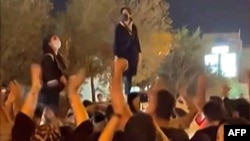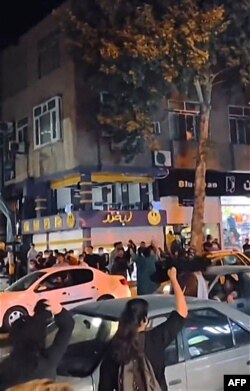Riot police and security forces have clashed with protesters in several Iranian cities amid demonstrations against the death of a woman held in captivity by the country’s morality police for failing to properly wear a hijab.
The latest protests took place in Tehran, Tabriz, Karaj, Yazd and other areas, continuing the outpouring of calls for justice that began September 17.
Iranian officials have said 41 people have died since the protests began, while human rights groups put the toll higher.
Twenty-two-year-old Mahsa Amini was arrested September 13 in Tehran and authorities announced her death three days later.
Amini's family alleged she was beaten in the police van after her arrest, suffering several blows to the head. Police reject the allegations, saying Amini died after being taken to a hospital because she had suffered a heart attack.
Iranian President Ebrahim Raisi says he has ordered an investigation into the detention and death of Amini.
Nada Al-Nashif, the acting U.N. high commissioner for human rights, said last week "Mahsa Amini's tragic death and allegations of torture and ill-treatment must be promptly, impartially and effectively investigated by an independent competent authority.”
Some Iranian women have publicly cut their hair or burned their headscarves in the streets as angry crowds have called for the downfall of Supreme Leader Ayatollah Ali Khamenei.
Earlier this week, Jake Sullivan, U.S. President Joe Biden’s national security adviser, told ABC’s “This Week” show on that the Iranian protests “reflect a widespread belief that [the demonstrators] deserve their dignity and rights” and that the U.S. supports them.
He said the U.S. supports people “who stand up for their rights.”
Some information for this report came from Agence France-Presse and Reuters.










